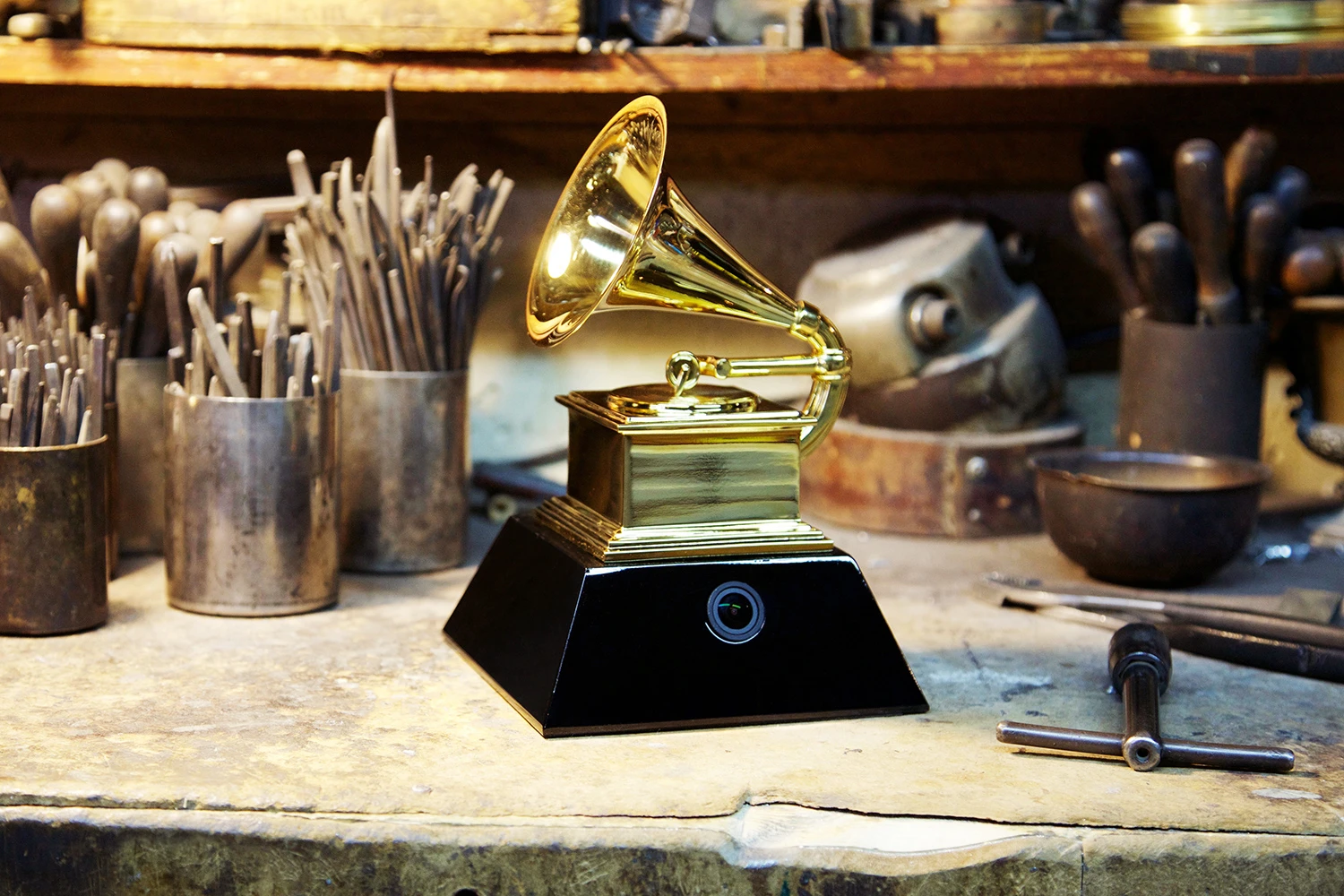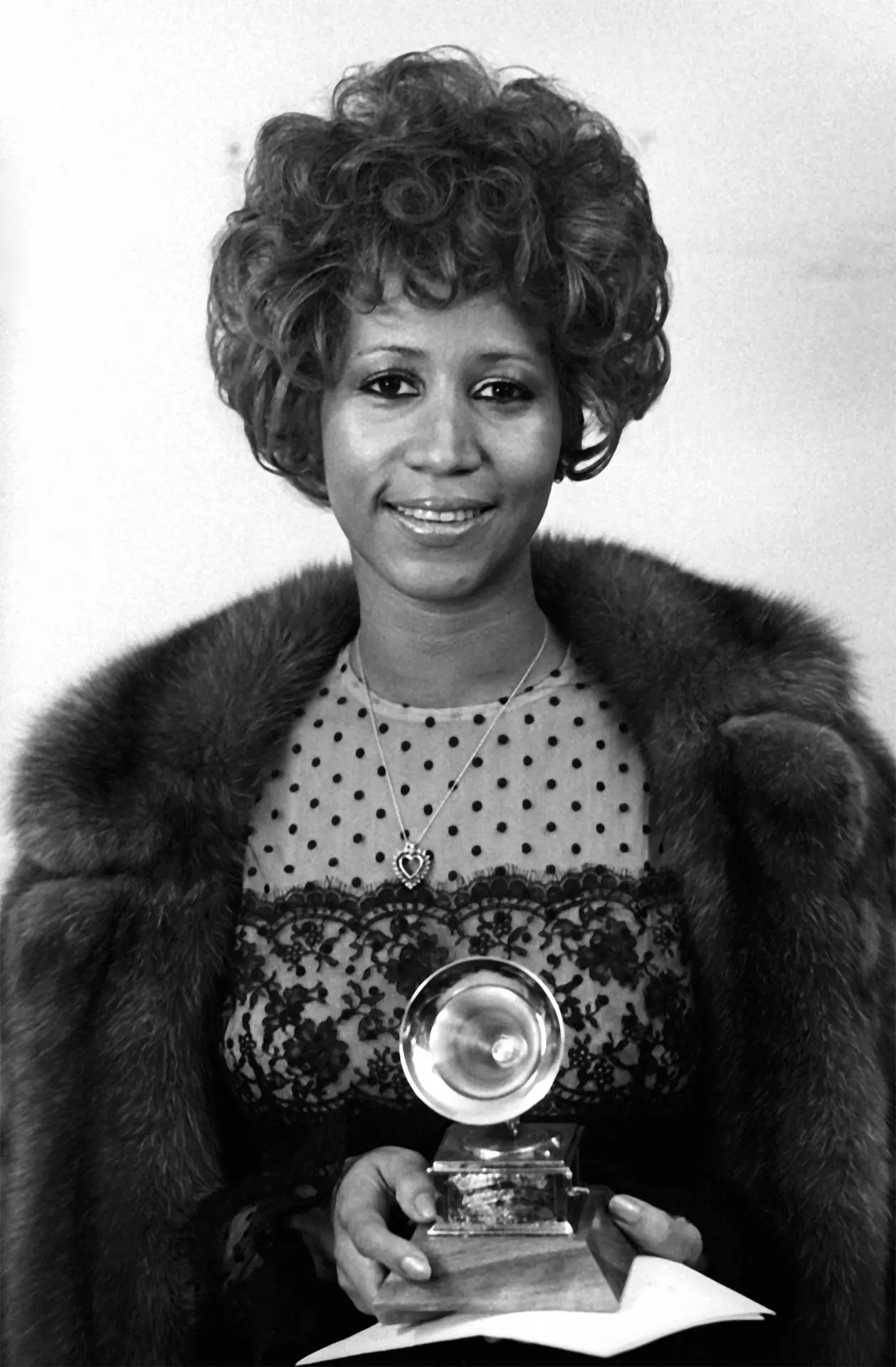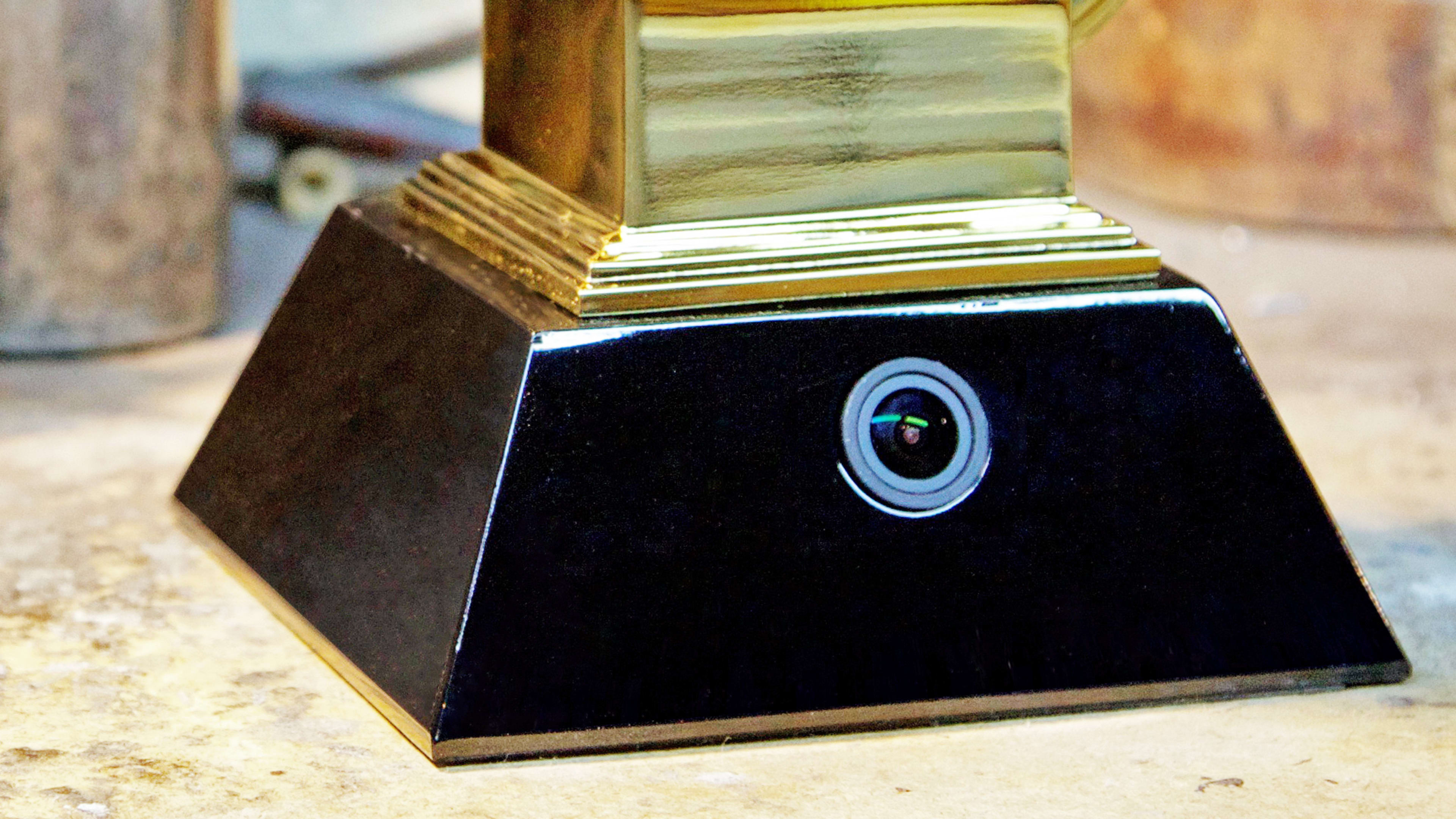Back in 1959, when the music industry’s Recording Academy presented Grammy awards for the first time, it chose to bestow a trophy that depicted a gramophone–one of the giant-horned record players popular at the turn of the 20th century. It was a pleasantly old-timey image even then. Today, when so much listening doesn’t involve the playing of physical media at all, the design is even more evocative of music’s past.
But when the Academy gives out the 58th annual Grammys on February 15 in Los Angeles, the ceremony will involve a new version of the trophy that packs some distinctly 21st-century technology, in the form of the Grammycam. That’s the tiny video camera, built into the award’s base, that will capture the onstage action from the perspective of the trophy itself and live-stream it to the world.
Evan Greene, CMO of the Recording Academy, says that the tagline for this year’s awards, “Witness Greatness,” inspired the organization to try and come up with a dramatic new way to make viewers feel like they’re part of the action. “As we started thinking about the incredible moments, the never-before-seen and unexpected moments that take place, we asked, ‘How can we provide fans access and a point of view they’ve never before experienced?” he explains. “That’s how the idea hatched.”
Video from the Grammycam will be incorporated into Grammy Live, an Internet stream that begins five hours before the evening broadcast and continues until the final award is accepted. The stream includes the Grammy Premiere Ceremony–an afternoon event with dozens of additional awards–as well as red-carpet and behind-the-scenes coverage. (7.5 million people tuned in to last year’s stream.) The producers of the evening broadcast will also have the option of incorporating Grammycam clips into the show aired on CBS.

Take One GoPro…
The notion of a video-enabled award isn’t completely unprecedented: In 2013, Tina Fey won a SAG award and discovered that it had a camera duct-taped onto the base. But the Recording Academy’s take on the concept, with multiple trophies with embedded Grammycams, is much more ambitious and polished.
“We didn’t know what the solution was,” Greene says. “It started out as a bit of a blank canvas. We began to realize just how complicated this whole thing was going to be.”
As it turned out, the most practical way to build a Grammycam was to start with GoPro action cameras as an ingredient. The Recording Academy collaborated with GoPro’s custom solutions team to put a custom version of the Hero4 Black camera and an antenna into each award’s base, positioned for optimum signal strength. Using a GoPro technology called HeroCast, the camera can wirelessly stream video via RF to the broadcast truck where all the video feeds for Grammy Live and the TV broadcast get managed. The cameras are powered by batteries, which means that the people responsible for them must take care to make sure that they don’t run out of juice mid-ceremony. “It creates a pretty big, complicated workflow to make sure this all comes off right,” Greene says.
The whole idea is possible in part because the Recording Academy, unlike such organizations as the Oscars’ Academy of Motion Picture Arts and Sciences, doesn’t present winners with their own actual take-home trophies on stage. The lucky recipients get their engraved Grammys–sans Grammycam–delivered later; the ones onstage are stand-ins, and can therefore be purpose-built for the ceremony’s needs.
Just what it’ll be like to witness the Grammy awards via a camera built into a Grammy is tough to predict until the ceremony happens. But among other moments, we should get to see close-up views of some very happy musicians as they’re handed their trophies by onstage award-wranglers known as “Grammy girls.”
Old-Fashioned Craftsmanship

Other than the embedded cameras in this year’s on-stage trophies, Grammys are even more handcrafted than you might expect. The awards are produced in a metal shop in Ridgway, Colorado by John Billings, who’s only the second Grammy maker in the history of the award, having begun 40 years ago by apprenticing for Bob Graves, who molded the first Grammys for the 1959 ceremony.
Over the years, the Grammy award has lost the gramophone’s fragile crank, gotten bigger, and made a materials transition from brass to gold-plated zinc. But it remains one of the planet’s most iconic trophies, and the Recording Academy wanted Billings to give his blessing to this year’s high-tech version. “He’s been supportive of this project from the very beginning,” Greene says. “We went to the master himself to make sure we got it right.”
Will the Grammycam become a staple of future ceremonies? That depends on how it fares during its inaugural appearance next week, but Greene’s hopes are high. “The first time doing anything is a bit of an experiment,” he says. “We’re very enthusiastic and very optimistic. We felt this idea was so strong and unique that we really passionately advocated to make it happen.”
[Story amended at 4:22pm on 2/12/16 to clarify GoPro’s role in implementing the Grammycam, which involves a custom solution rather than a disassembled off-the-shelf camera.]
Recognize your brand’s excellence by applying to this year’s Brands That Matter Awards before the early-rate deadline, May 3.
